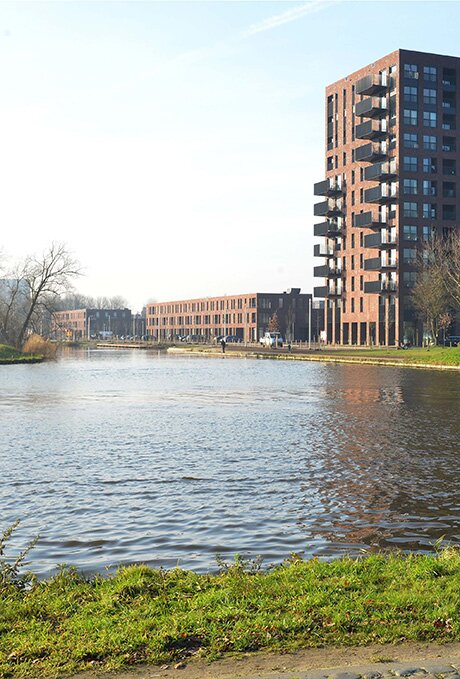Ensemble "de Werf" Piushaven in Tilburg

As part of the urban development of the northern bank of the Piushaven Harbor in Tilburg, the ensemble de Werf is an architectural realization of approx. 100 dwellings, questioning the privatizing of public space. The new urban design completes the existing, unfinished urban block. At the water edge the building line meanders, forming in one generous gesture a series of public spaces on the port, each with its own specific character. Sober, uniform architecture with an emphasis on detail and tectonics sets the focus on the series of public spaces along the water.
Research questions.
The specific conducted research and questioning relates to
1) In what way do inhabitants identify themselves with the context; the house, the urban setting and/or the architectural elements, or the quest for the complementarity of urban design and architecture?
2) How can coherence in an urban environment influence the social behavior, communication and interaction of the inhabitants and public users?
Impact.
The study and the project have been consulted widely and cross-border on different forums. There are several websites that have published the project, see also the "impact references".
The project has also been published as an “example project in its discipline" in the Dutch Yearbook Architecture of the year 2014, (“De Werf Piushaven te Tilburg”, Architecture in the Netherlands | Yearbook 2013/2014, NAi 010 Publishers, Rotterdam (NL) 2014, ISBN 978-94-6208-115-4, p. 30-33).
The project is often shared and "liked" on Pinterest, a worldwide used forum for architecture, design etc. on different aspects of the design (materials, tectonics, urbanism, ...), for example www.pinterest.com/pin/414331234440666547.
A project bundle is available, including texts, plans, diagrams, photographs, 3D simulations.
* The project has been comparatively studied in its use of “effective development strategies” in the “praktijkleerstoel gebiedsontwikkeling” at the University of Delft in 2013
* The project has been comparatively studied in its use of “innovative use of space” by the Water Heritage Foundation (watererfgoed.nl)
* Students have included the project in their studies as a reference to urban density and for the specificity of the use of materials and tectonics.